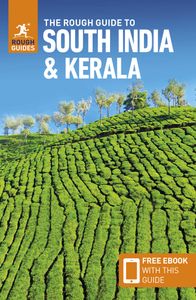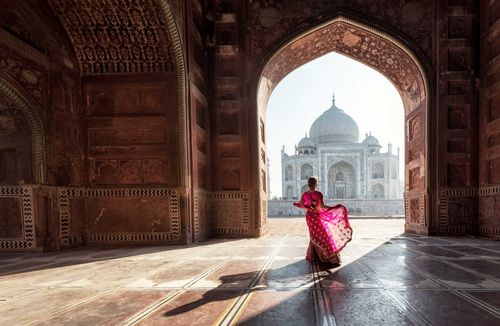Trekking
Though trekking in India is not nearly as commercialized as in neighbouring Nepal, the country can claim some of the world’s most spectacular routes, especially in the Ladakh and Zanskar Himalayas, where the mountain passes frequently top 5000m. Himalayan routes are not all extreme, with relatively gentle short trails exploring the Singalila Range around Darjeeling, low-level forest walks through the rhododendron-clad hillsides of Sikkim and the well-beaten pilgrim trails of Garhwal. Trekking is also becoming more popular in the Western Ghats and Nilgiris of the south.
Hiring a guide-cum-cook is recommended whenever possible, especially on more difficult and less frequented routes, where the consequences of getting lost or running out of supplies could be serious. Porters (with or without ponies) can also make your trip a lot less arduous, and on longer routes where a week or more’s worth of provisions have to be carried, they may be essential. You’ll usually be approached in towns and villages leading to the trailhead by men touting for work. Finding out what the going day rate is can be difficult, and you should expect to have to haggle.
If the prospect of organizing a trek yourself seems too daunting, consider employing a trekking company to do it for you. There are agencies in places like Manali, Leh, Darjeeling and Gangtok, while specialist tour operators abroad also offer trips based around trekking.
Himachal Pradesh is the easiest state in which to plan a trek. Uttarakhand sees fewer trekkers, and there are plenty of opportunities to wander off the beaten track and either escape the hordes of pilgrims or, alternatively, to join them on their way to the sacred sites of the Char Dham. There are also exciting and exotic high-mountain trekking opportunities in the ancient Buddhist kingdoms of Ladakh and Zanskar, where trails can vary in length from relatively short four-day excursions to epics of ten days or more. At the eastern end of the Himalayas, Darjeeling makes a good base from which to explore the surrounding mountains. Neighbouring Sikkim has the greatest variations in altitude, from steamy river valleys to the third highest massif in the world. Shorter and less strenuous treks are available in the Ghats and the Nilgiri hills of southern India, with Munnar and Wayanad in Kerala, the Kodagu region of Karnataka and Ooty in Tamil Nadu proving the main springboards.
Having the right equipment for a trek is important, but high-tech gear isn’t essential – bring what you need to be comfortable but keep weight to a minimum. You can rent equipment in places such as Leh and Darjeeling, but otherwise, you’ll have to buy what you need or bring it with you. Make sure everything (zips, for example) is in working order before you set off. Clothes should be lightweight and versatile, especially considering the range of temperatures you might encounter: dress in layers for maximum flexibility.
Mountaineering
Mountaineering is a more serious venture, requiring planning and organization; if you’ve never climbed, don’t start in the Himalayas. Mountaineering institutes at Darjeeling, Uttarkashi and Dharamsala run training courses. The Nehru Institute of Mountaineering at Uttarkashi in Uttarakhand is popular with foreigners: you can learn rock- and ice-climbing skills and expedition techniques for a fraction of what you’d pay in the West. Permission for mountaineering expeditions should be sought at least six months in advance from the Indian Mountaineering Federation in New Delhi (011 2411 1211).
Skiing
Despite the mammoth spread of the Himalayas, skiing in India remains relatively undeveloped. The only options for organized skiing are the western Himalayas, in particular Uttarakhand, Himachal Pradesh and Kashmir; the eastern Himalayas have unreliable snowfall at skiing altitudes.
The ski area at Auli, near Joshimath in Uttarakhand, has had money poured into it but suffers from a short season, limited (though cheap) skiing and nonexistent après-ski activity. In Himachal Pradesh, the skiing in the vicinity of Shimla is far too underdeveloped to warrant a detour, but the possibilities around Manali are more enticing because of the prospect of virgin powder: two or three surface tows operate in the Solang Nala for three months every winter. By far the most promising prospect at present, however, is Gulmarg in Kashmir. On a plateau at 2600m, the former British hill station boasts the highest ski lift in the world – and some of the most dependably fine powder snow to be had anywhere. Skiers are dropped at nearly 4000m by a French-built gondola, from where the off-piste possibilities are truly world class.
Whitewater rafting
Though not as well known as some of the mighty rivers of Nepal, the rivers Chenab and Beas in Himachal Pradesh, the Rangit and Teesta in Sikkim, the Zanskar and Indus in Ladakh, and the Ganges in Uttarakhand all combine exciting waters with magnificent scenery. Kullu, Manali, Leh, Gangtok and Rishikesh are among the main rafting centres. Prices start at around ₹2000 per day including food, but it’s worth sounding out a few agents to find the best deals.
Caving
Meghalaya has the best caving potential of all the Indian states. The three main areas are the East Khasi hills, the South Garo hills and the Jaintia hills (home to the 21.4km-long Krem Kotsati–Umlawan cave, the longest system in mainland Asia). Meghalaya Adventurers’ Association in Shillong offers caving trips.
Diving, snorkelling and other watersports
Because of the number of rivers draining into the sea around the Subcontinent, India’s coastal waters are generally silt-laden and too murky for decent diving or snorkelling. However, in many areas abundant hard coral and colourful fish make up for the relatively poor visibility. India also counts two beautiful tropical-island archipelagos in its territory, both surrounded by exceptionally clear seas. Served by well-equipped and reputable diving centres, the Andaman Islands and Lakshadweep offer world-class diving on a par with just about anything in Asia. Don’t come here expecting rock-bottom prices though. India’s dive schools cost at least as much as anywhere else, typically charging around US$70 for a two-tank outing, to US$270–300 for an open-water course.
For independent travellers, the most promising destination for both scuba diving and snorkelling is the Andaman Islands in the Bay of Bengal, around 1000km east of the mainland. Part of a chain of submerged mountains that stretch north from Sumatra to the coast of Myanmar (Burma), this isolated archipelago is ringed by gigantic coral reefs whose crystal-clear waters are teeming with tropical fish and other marine life. Havelock Island has by far the most dive centres, while its smaller neighbour Neil is slowly developing a scene; you can also dive on North Andaman or around Chiriya Tapu and Cinque Island, both accessed from Port Blair. If you want to do an open-water course, book ahead as places tend to be in short supply especially during the peak season, between December and February.
Lakshadweep is a classic coconut palm-covered atoll, some 400km west of Kerala in the Arabian Sea. The shallow lagoons, extensive coral reefs and exceptionally good visibility make this a perfect option for both first-timers and more experienced divers – though transportation and accommodation are very pricey.
PADI-approved dive schools also work out of a handful of resorts in Goa. Although the waters off the Goan coast have poor visibility, these schools take clients further south to an island off the shores of neighbouring Karnataka where conditions are much better.
Other niche watersports such as kitesurfing, which has a centre in Rameshwaram, are also beginning to make an appearance.
Camel trekking
The way to experience the desert in style is from the top of a camel. The one-humped Arabian camel, or dromedary, common in desert regions of Rajasthan, is well adapted to the terrain, with long double eyelashes to keep sand out of its eyes, nostrils that it can close, and broad, soft, padded feet that are ideal for walking on sand. Riding on a camel is smoother than riding on a horse because the camel moves its left and then right legs together, rather than front and then back legs, giving it a more rolling gait. They are usually docile, good-tempered animals, but the male goes into rut in spring, when it becomes rather grumpy and can kick and bite, and spit its regurgitated stomach contents in anger.
Camel treks can be arranged at Jaisalmer and Bikaner and many other places in Rajasthan. Some treks stick to the beaten track, and take you to the popular tourist sights. Others specialize in heading off deep into the desert for a feeling of isolation and remoteness. Typically, camel treks include two days in the saddle and a night spent camping in the desert, but you can opt for longer or shorter trips.














